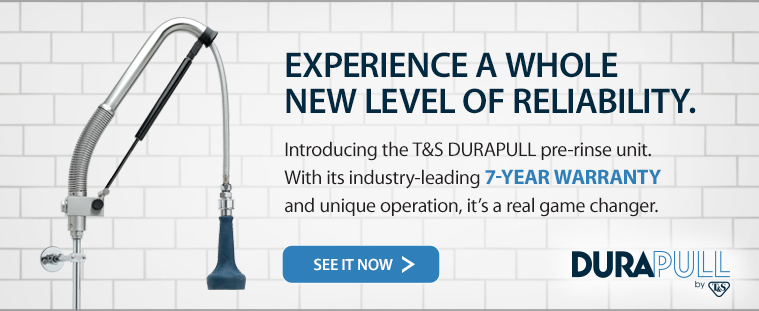Getting what you pay for: 3 ways cheap plumbing costs restaurants money
Articles

When outfitting a restaurant — whether at initial construction or during a renovation — plumbing is often one of the final items installed, at a point when the budget may already be testing its limits. Contractors and operators might be tempted to cut costs by switching from the high-quality plumbing products typically favored by designers and consultants to lower-cost choices.
But while that decision may save some money in the short term, cheap plumbing can rack up much higher costs, generating expenses far beyond the initial purchase price. Below are three ways cheap plumbing choices cost restaurants money.
Frequent repair
Inexpensive faucets and pre-rinse units often experience leaks or other failures within a matter of months when exposed to the rigors of a busy kitchen. A country club kitchen, for example, encountered leaks almost immediately when its hand sinks were outfitted with lower quality faucets during a renovation.
Frequent visits from a service contractor to replace wearable parts that wear out prematurely can add significantly to the overall cost of the fixture. Long-lasting products designed for the demands of commercial environments provide much longer uninterrupted service between periodic maintenance needs.
Wasted water
Those leaks from inexpensive plumbing fixtures are more than just a repair nuisance. They’re also a source of unnecessary cost.
While a small drip that doesn’t interfere with regular function may seem like an insignificant issue, a faucet that leaks at the rate of one drop per second can add an extra 3,000 gallons per year to a water bill — plus corresponding energy and sewage costs.
In addition, inexpensive faucets frequently do not come equipped standard with water-saving features, like vandal-resistant low-flow aerators and low-flow spray valves. These may be available as options but are often overlooked since “it’s just a cheap faucet anyway.”
That means for every hand washed or every pot rinsed, there’s extra water going down the drain.
Many kitchen faucets examined by T&S experts are flowing at a rate of 7 gallons per minute (gpm) or more. Switching even from 2.2 gpm to 1.0 gpm at a hand sink can save more than 3,500 gallons of water per year.
Regular replacement
Inexpensive fixtures, often not constructed to withstand the heavy use of a busy kitchen, may experience a failure that’s not able to be repaired — or may not be worth the cost to repair.
One North Carolina service contractor said a high-traffic restaurant that installs a lower quality faucet or pre-rinse unit will typically call him for repair or replacement within a year.
Purchasing an inexpensive replacement year after year — plus the downtime and disruption of an out-of-service fixture and the labor costs to install the replacement — can quickly add up to far more than the original investment in quality plumbing would have cost.
The need for reliable function is part of the reason even budget-strapped school districts turn to quality manufacturing from T&S as both a time-saver and an important money-saver. Preventing leaks or malfunction not only spares kitchens from critical downtime but also saves valuable resources from going to repair or replacement.
Learn more about where and how T&S supports optimal restaurant function here.








